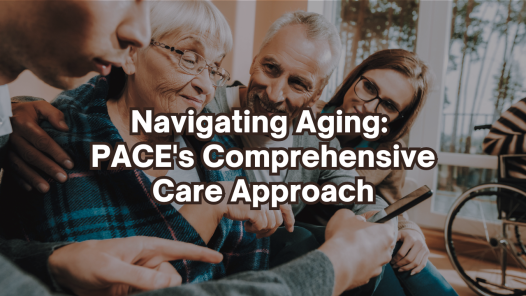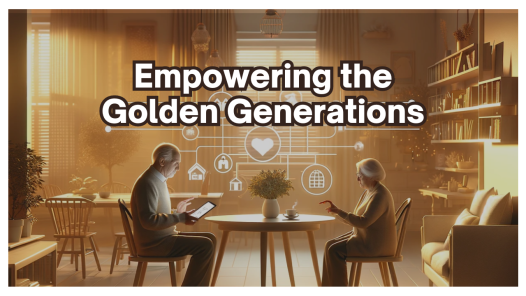
Leon D. Caldwell, Ph.D
Leon is a senior level solution focused strategist for social innovation. He is an accomplished leader in philanthropy, education, and social innovation. An award winning international scholar-activist, change agent and researcher with a track record of moving from vision to execution in multiple settings. An entrepreneurial mindset and professional counseling training are foundations for his ability to work collaboratively to design solutions within ecosystems.
Dr. Caldwell has transformative leadership, thought partnership and consulting experiences across multiple sectors.
Leon’s Links:
LinkedIn: https://www.linkedin.com/in/leon-d-caldwell-ph-d-3312192/
Twitter: https://twitter.com/ActiveScholar

Jacob Fisher
Regional Vice President, Pennrose, LLC
Jacob Fisher serves as Regional Vice President. In this role, he oversees all development activity in New Jersey and the Delaware Valley. Jacob brings more than 10 years of experience to Pennrose and has been instrumental in working with partners from the public, private, and non-profit sectors to bring development projects to fruition. Jacob has secured financing and led award-winning development teams on more than 1,100 units of new housing, with a total investment worth more than $300 million. Jacob joined Pennrose in 2007 as an Associate Developer. Prior to Pennrose, he worked on community development in the public sector as the Assistant Director for Policy for the Mayor of Philadelphia. Jacob received his Bachelor of Arts from Wesleyan University and his Master of Government Administration, with a concentration in Public Finance, from the University of Pennsylvania’s Fels Institute of Government.
Jacobs LinkedIn: https://www.linkedin.com/in/jacob-fisher-6a71465/
Hanh Brown: [00:00:00] Thank you for taking time out of your busy schedule to be here and listening on this conversation. I’m joined today by Leon Caldwell in Jacob Fisher in the senior living industry and Leanne and Jacob, please introduce yourself.
Leon Caldwell: [00:01:34] Hi, I’m uh, dr. Leon Caldwell. I’m a founder and CEO. Oh Jima developers, which is a holistic, equitable development firm that specializes in social impact investing in under served.
Jacob Fisher: [00:01:50] Hi, and I’m Jacob fixture, regional vice president with Penrose. We are a Philadelphia based developer of multi-family housing expertise are in affordable, mixed income and market rate housing. We’re active in 13 States. With regional offices from Massachusetts, for Boston down to Atlanta. And as far West, as Chicago, we have developed 18,000 units of housing and more than 250 communities in our 40 year history, we’ve developed about 1400 units of rental housing until Adelphia and of those 450 are senior housing, 60 age restricted to 62 plus, and those really are all around the city.
[00:02:31] We have. Is in Germantown in North Philly, in center city in East falls. And we’re really all over the city. And all of the senior housing developments that we have in Philly are funded through the low income housing tax credit program.Hanh Brown: [00:02:47] Thank you for the introduction. So in today’s conversation, we will be discussing the impact of COVID-19 on senior housing and what the future of senior housing industry looks like.
[00:02:58] So let’s get started. So we’re going to talk about the tactics currently in place that are protecting both the residents and the frontline workers at the senior housing community. What are these tactics in? How are the senior housing operators implementing them and keeping everyone safe and healthy? Do you have any thoughts on that, Jacob?Jacob Fisher: [00:03:19] I do. And I want to add that. So Penrose as a development company, we also have an affiliated management company and Rose management company, which manages about 10,000 units of our property, including all of our units in Philadelphia. And so I’ve. Spoken to team members there and really gotten a good sense of what our approach has been.
[00:03:37] And we’ve, we’ve evolved. I think as everybody has, since the beginning of the pandemic and the quarantine regulations and our approach to keeping residents safe at the outset in our senior communities, we had a lot of difficulty enforcing social distance rules and getting people to stop, not congregate in common areas. [00:03:56] And unfortunately we had to close down community rooms and exercise rooms and we had to remove. Furniture from some of the common areas to dissuade people from, from congregating, which is an unfortunate thing in communities that really thrive on people being able to get together and socialize. We began intensive cleaning of our common spaces. [00:04:17] So I’ll high touch areas. Elevators door handles. Railings, et cetera. And then our supportive services staff. So of all of our communities, we have a supportive service program. So we have a director of supportive services and our management company. And then we have service coordinators that, that provide services and connect residents with the needed services at our properties. [00:04:41] And so our supportive services staff. Started working on, first of all, gathering PPE, wherever they could. So taking donations of masks and gloves and getting those out to residents, they’ve been coordinating really throughout the quarantine have been coordinating meals to residents where they can. So, so getting donations or connecting people with services, they also began very early on making weekly phone calls to all of our residents. [00:05:10] The just check in. People can be very isolated. As I mentioned, close down common areas to cope with some of that isolation. We’ve had weekly check-ins with residents and at those times found us, somebody needs some food or somebody needs something. And so supportive service coordinators have been able to, to help get them what they need. [00:05:30] And then, you know, another aspect of this I think is trying to. Try to care for our own staff members. I think that from the outset, it became very clear that our maintenance staff and our office staff and our buildings are really front line workers. So there was no, no option to. Uh, to not go to work for, for a lot of those staff members, all of the office staff members, we had them on a hybrid model. [00:05:54] So we really tried to create protocol or creative protocols where people were only doing the maintenance staff were really only doing emergency maintenance, as opposed to some of our routine maintenance was pulled back with, if it involves going into the units, extensive, able to reinstate some of that. [00:06:11] Um, and then we’ve really also tried to look out for our staff members, recognizing the stress. Of being frontline workers. We’ve had a lot of internal communication about mental health awareness reminders of what’s available through our healthcare benefits for counseling, for people, to the extent that they need, they need that. [00:06:28] And our owners have taken a really strong interest in reaching out directly and making phone calls directly to our maintenance staff. To thank them for their work, see what they need and just let them know how appreciated their efforts.Leon Caldwell: [00:06:42] Hi. I want to, just to add quickly, you know, as a social impact developer, we were really interested in partnering with nonprofits in the area to particularly community transformation partners, but we had a partnership for mask making.
[00:06:57] And some of the mask that we would make using the volunteers from the community were distributed to several senior facilities in the community. So there was a, an effort, I think, as Jacob pretty, you know, astutely talked about is that this a holistic framing around how to support people do this, not just. [00:07:16] And the cleaning of buildings, but they’re all kind of mental hygiene as well was extremely important.Jacob Fisher: [00:07:21] During this time.
Hanh Brown: [00:07:22] There’s so much for that in the midst of all this team culture is everything right, creating that, setting the environment so that everyone working in harmony in the midst of this chaos.
[00:07:33] So I appreciate your thoughts. So what restrictions in protocols do employees have to follow outside of work?Jacob Fisher: [00:07:42] We have more protocols, too place for people when they’re coming back to work. So we all are using an app, which I mean, probably many people on the call are familiar with that. The checks in, on your health status of the day and potential exposures to people that are maybe diagnosed with COVID and encouraging people to stay home that are not feeling well as they’re their responsibility to communities that they’re working within and to their coworkers to try to keep everybody healthly.
Hanh Brown: [00:08:10] I read that life care centers of America, they operate about 200 facilities nationwide. One of the means to better manage the whereabouts and the in and out of the employees. They also stopped moving contract workers after the pandemic began. So that certainly will help and typical nursing homes have an average staff connections with 15 other facilities.
[00:08:35] They also concluded that eliminating staff linkages between nursing homes. Could we do so Corona infections and then about 44%. So all these little steps, making big impact.Jacob Fisher: [00:08:47] Good. That’s actually a really good point that we have in pre COVID times, we would have any number of either outside contractors or other service providers coming into the building or events or programming.
[00:08:59] And that a lot of that has been curtailed really down to what is absolutely necessary as far as visitors and that, and this is maybe a topic for later, too, but that also presents some challenges with leasing up. Units and all of that work has really taken place and it’s continued through the quarantine period, but all of that work has really needed to take place on the appointment only basis. [00:09:26] No walk-ins. And as much of it conducted by phone or remotely before needing to come in person.Hanh Brown: [00:09:34] So now, how has your capital stack changed since March? Are banks requiring more initial equity to get a low what’s your thought on that, Leah?
Leon Caldwell: [00:09:45] Well, this has been just a general economic contraction with, particularly with the unease of protecting men, but men, these units, that rental units.
[00:09:55] So when I would say the circular nature of the economy, if it looks like the job list numbers on unemployment number goes up, then it’s a real reality that some people will not be able to pay rent. I’m bringing that up just for the seniors, but seeing you as a part of families. And oftentimes their families are the ones who are supporting seniors and the facility. [00:10:19] We operate our building. So the, the capitalist stacks of look. Incredibly different where you used to be able to take, do a project at 80% LTV or, and that’s changed. Some lenders are asking for 60 or looking for 60 or 70 to reduce their risks. We have seen stacks look much different banks requiring different underwriting criteria than they had previously. [00:10:45] When we did, we were not in such a economic crisis as a result of a public health crisis.Jacob Fisher: [00:10:53] Well, yeah, so I was actually gonna say something, you know, some overlapping in it and also a little different. So in the, in the low-income housing tax credit space, the actual front end capital stack for doing a project has not.
[00:11:07] Changed in itself that sources of funds so far are the same. What we are seeing is the value of the tax credits or the price rather than people are paying for tax credits is starting to fall. And for people that are familiar with the program, we’re getting a tax credit from the IRS, which we’re then selling to an investor to bring in about 70% of the capital for the affordable housing development. [00:11:34] And that. Price for that credit is expressed in cents on the dollar. Whereas in last year, maybe an affiliate deal, we’d be seeing 95, 96 cents on the dollar. That price is now falling pretty much to about 90 cents. And in places that are not Metro areas, we’re seeing that price or we’re seeing proposals for pricing that are into the eighties and really what’s going on there. [00:11:59] Is because of this economy that we’re in the typical investors in tax credits are looking at their future projections of what their corporate profits are going to be. And they’re projecting less profit, or they’re unsure, there’s less to offset. And so there’s less interest in investing in tax credits. [00:12:21] And then on the other side of the coin expense side, we’re really not seeing. Big changes in construction pricing. So our deals are basically still costing the same and think an economic downturn might actually a bunch of projects get stalled and you’d see falling construction prices. We’ve heard rumors of this, but we really have not seen it in practice. [00:12:43] And whereas a year ago, You had construction pricing, being climbing because of the scarcity of labor, there’s so much going on, it was hard to get qualified. Subs were charging, whatever it is they wanted for price per project. And you couldn’t really, you couldn’t really do anything about that. Now, even with some projects being shells or delayed, what we’re seeing is interruptions in the supply chain. [00:13:09] Concerns about impacts of COVID or shut downs or illness on the site. And so that’s finding its way into the pricing. So we really haven’t seen any relief in, in certain materials, like lumber have been just through the roof lately. So you’re really not seeing any relief on the pricing side that echo what Leon said about banks, underwriting. [00:13:29] We are seeing some changes. So a couple of examples that we’ve seen. Banks are, instead of, you know, you typically underwrite maybe a 2% increase in rents year over year. Certain banks are looking at maybe keeping that flat for a couple of years and then going up so that you’re not trending up at the same rate. [00:13:47] We’re also seeing banks looking to have additional reserves. Funded for to rainy day in case, you know, more job loss or people unable to pay their rent. So we’re seeing that on the bright side, Pennsylvania just passed or the house and Senate just passed. And I think the governors signed it into law of having ready its own state housing tax credit, which mirrors the federal program. [00:14:10] So hopefully that’s some additional resources that will be available for our projects. And there also are few proposals kicking around at the federal level that have been really around for awhile to expand the 9% tax credit program to increase the value of the 4% tax program. And those proposals I’ve gotten some traction, but really are just trying to attach themselves to a larger COVID relief. [00:14:36] Package, which you know, is probably everybody knows is not forthcoming and certainly in the next and the next week. And hopefully sometime after that, you’ll see another package coming around.Hanh Brown: [00:14:49] Thank you, Jacob. So have you seen cities had to cut back on subsidies due to the economic slowdown and if so, are some of these senior housing projects still feasible?
[00:15:00] And have you had to scrap any projects due to losing subsidies?Leon Caldwell: [00:15:03] I’d say as a small developer subsidies, particularly in a neighborhoods that we’re developing critical. And we have seen developing at least three cities and we’ve seen each of those cities lose revenue and that revenue actually is the basis for some of the subsidies or the reallocation of funds.
[00:15:23] So there are projects now where we’re looking at sources of subsidy that are atypical, meaning instead of municipal government, we may be looking at philanthropy. We may be looking at some investors on the impact side. There are a number of. Projects throughout many cities that will, you know, as Jacob said, not just get stalled because of the escalation. [00:15:46] And I’m thinking escalation in construction prices, not just from the labor side, but also the material side. Those will, you know, they put the projects out of balance. We’re hoping not to scrap projects in some case we’ll wait it out. We typically buy most of our stuff in cash. We don’t have banks breathing down our neck, looking for money as we. [00:16:03] Actually have a holding period, but at the same time, these projects are really dependent upon or looking to put people in safe and accessible, affordable housing. So that demand hasn’t shrank at all. But the actual ability for a city to support that is we’re seeing a diminished, at least stalled is probably a good word. [00:16:26] Mintel the economy kind of figures itself out. But the other part to this is that there is. A good number of kind of small developers, you know, are trying to go to scale. And a lot of that kind of the entry points are based on getting a project launch because it does have relationship with a government or subsidy. [00:16:47] And if the government is saying, or the producer of a subsidy is saying, we’re not there now I’ve had subsidy in the project actually. Cool because the city’s budget actually shrank. So now we’re trying to look at what state subsidy looks, and that’s far more competitive in the state that I’m in. And it does depend on a lot of relationships, which in many cases, small minority developers are not in those rooms, making those decisions or having those type of relationships. [00:17:14] So it is my concern on that is that as subsidy goes and particularly for projects in the stress neighborhoods, who could in fact be transitioning or some of these neighborhoods who are on the bubble of transition, those middle neighborhoods, as we call them, those projects will either go or get stalled depending on the leveraging of the developer. [00:17:35] Or it will going to go back into disrepair because the city has to actually make decisions. And you see this in Philadelphia. Now with budget cuts and the other city I’m working in Baltimore. These are places that have been hard hit by COVID-19 preparation, as well as other issues with the civil unrest. [00:17:54] There’s just a contraction of capital. And really it’s going to be the loss of revenue beyond just as the commercial real estate does what it does is people start to rethink what work looks like. This is all in one. Big, you know, my automation of change. It’s going to wreak havoc on, I think senior housing or at least senior housing development in particularly in neighborhoods that I’m most concerned about. [00:18:19] If you can afford to live in certain places and have an affordable senior housing, which based on your income prior to being retirement, then you’re great. But if you are a low income person, I think is. As Jacob was saying, we hope it doesn’t strengthen the inventory for those who are less fortunate, because then we’re going to have huge problems with senior housing.Hanh Brown: [00:18:41] Thank you, Leon. Do you have any thoughts on that, Jacob?
Jacob Fisher: [00:18:43] Yes, sir. I think that what Leon and some of the places that you’re on the ground or some of the things that you’re hearing, I think are portends of what’s to come some cases. Yeah. I think that the shoe of shrinking municipal resources has yet to drop you.
[00:19:01] See it poised up there and ready to come down, but there’s in terms of reduced rate of bowls and tight municipal budgets, I think that’s coming, but a lot of the resources for affordable housing that we utilize are federal. That are black ranted out to the States or to the cities like the home program or the media development block grant program. [00:19:25] And that’s, that’s federal money has been shrinking for years. So that’s always a struggle to make the capital. That work. There are other sources like here in Philadelphia, there’s a housing trust fund, which is funded by recording fees. So when there’s ever there’s a real estate transaction and, or a sale, there’s a, the recording fees are doubled. [00:19:48] And half of that is going into this, to this trust fund. And so the market is active. The trust fund will be flush. And if the market is slow, the trust fund will not have resources. In it. And so that’s really dependent on what happens with the theater. To me. We are just as to the question that we had to describe any projects, fortunately, we’ve not had to drop any projects. [00:20:12] Leon referred to demand the demand is, is there. The demand is always, I think senior housing, affordable senior housing in an urban area is inelastic. Demand there’ll be a need for it. If people living longer living on fixed incomes, there is, there’s just always a need for that, that housing. And we will continue to try to, to do these projects and find ways to get them closed. [00:20:38] But I do anticipate, uh, some uphill climb with the challenge of getting these projects funded.Hanh Brown: [00:20:44] That’s great to know you haven’t had to scrap any projects. Now, Jacob, you touch on the Tech’s policy prior. Would you like to add anything more with regard to changes that we would see in the tax policy? If a new administration is elected in, how would that impact the senior housing market?
Jacob Fisher: [00:21:03] The narrow, you know, example of the low-income housing taxes. There’s a lot to tax policy to speak very close to home here on the low-income housing tax credit program is very sensitive to two things. One is the, as I mentioned before, the corporate investors projections about their future profits. And how they’re feeling about the, where the economy is going.
[00:21:27] And then the other thing is the corporate tax rate. So, you know, the higher, the corporate tax rate, sort of the more valuable the investment in, uh, in tax credits, which helps to offset the tax bill of that corporation, that becomes a more attractive investment it’s on precedent. Trump was elected. He came into office saying we’re going to slash the corporate tax rate to 15% from wherever it had been 28, 30%, whatever it was prior to him coming into office. [00:21:55] And at that moment that caused a lot of consternation among investors. In tax credits. And a lot of them put on pause projects that they may have been considering or funds that they were considering buying into because, you know, they didn’t really know what the situation was going to be on the tax side and what their exposure would be. [00:22:13] And so that sort of had people pull back the final story there was that that rate dropped to 21% investors, I think, as they. As they often do came back and kept investing in developments. There was a change in administration. A lot of the sort of tax policy that’s been proffered would restore the corporate tax to a higher level, and that could motivate more investors to get into the game, so to speak or to help to drive pricing up, which would be a really needed boom. [00:22:45] To as other resources are shrinking, if that tax credit dollar becomes more valuable and investors want to pay more for it, that will help with capital stacks. And then I think some of the other items that I mentioned earlier, the expansions to the tax credit program, which has been kicking around, hopefully we’d see those, get some traction.Hanh Brown: [00:23:04] We’ll certainly find out what the next upcoming months. So, Leon, do you have anything to add about the tax policy?
Leon Caldwell: [00:23:10] I’m actually sitting here taking notes from a, Jacob’s become a professor now to mine for a tax policy, but I would say there’s decisions that developers in my space have to make. And this is a really interesting one had given this background.
[00:23:26] Around tax policy. It’s like, how do you promote like wealth in African-American communities? If we know that housing is one of the levers to wealth, like owning a house yet my ability now to develop senior housing on multi-generational housing model, the numbers don’t work unless I have a tax credit, which is essentially a rental model. [00:23:50] So it’s one of these things that somehow we had to figure out. Both subsidy tax policy, where there’s 4% of 9%, make them 4% more attractive for deals. So that there’s a way to have both affordable, accessible homes for seniors. And at the same time, promote home ownership for caregivers. And all of this policy is wrapped in to me and to one big conundrum around what incentivizes is. [00:24:20] Jacob was just mentioning what incentivizes investors for a low income tax credit buying, as well as putting those kinds of 9% deal of tax credit deals. In proximity to a for-sale model to promote home ownership for caregivers, because I don’t think we’re going to really change the dynamics in communities until we have more mixed income models. [00:24:42] And that’s, to me, at least where I sit anyway, that’s the kind of the goal of kind of a holistic equitable model where you have both the for-profit developer doing the work to make sure that people can own homes. And then even the for-profit developer, who’s investing in tax credit deals for affordable housing, hopefully around seniors and multi-generational models that could balance the neighborhood. [00:25:05] So it doesn’t, we concentrate poverty in just one space and just the only thing we can afford. And in Philadelphia, for example, where I’m developing our low income housing, that has to be somewhere in around a policy that has to be a balance. So we can really build out equitable neighborhoods.Jacob Fisher: [00:25:21] Thank you.
[00:25:24] I think that’s a really important point. And it’s the sort of the missing middle question that you’re getting at. To an extent you’ve got a affordable housing communities, which are kept in terms of who can live there at 60% of AMI. And then you have luxury housing on the other side and the funding of that middle ground, which is where probably most people live. [00:25:50] Is that the piece that’s not there. The low-income housing tax credit program has taken a, a little baby step in the direction of trying to address that by creating income averaging and allowing some units in a community to go up to 80% of median instead of, of 60, but really knows the 80 to one 20. [00:26:10] Space that needs, it really needs to be addressed. And that’s where the next billion dollar idea lies is cracking that.Hanh Brown: [00:26:18] Yeah. So do you have any other input regarding how can the lack of affordable senior housing issue be tackle before we move into more of the outlook?
Leon Caldwell: [00:26:29] My models have been to try to build a multi-generational housing, which combines kind of affordable senior housing in the same units, but mixed you building a multiunit building and we’re tinkering around with that.
[00:26:43] Now it’s a challenge because it’s innovative to some extent in times of chaos or what I would call the pandemic of hope. I think there’s innovation is actually needed. However, People don’t like finding innovation when it’s in a stressed. So as markets get stressed out as uncertainty, you know, as an economics major, I clearly remember one of my professors saying that markets and they can handle all kinds of ups and downs, but what they can handle is on certainty. [00:27:11] And I think there’s something about this uncertain time where. The investment in innovation, around housing innovation, actually in particular rethinking. And re-imagining what we’ll see in housing, actually, not only how we finance it, but what it actually is. And I think there’s a, the challenge that COVID presented, it will present actually. [00:27:32] And the coming years is people’s fear of placing seniors in somewhat isolation, if you will. And senior homes, whether it’s as independent living or housing, that, and to some extent, I was listening to Jacob’s introduction about what needs to happen. And we know one of the. Greatest public health risk for seniors is isolation. [00:27:53] So you can just imagine what’s happening now as these kind of really measures to save their lives are being put in place their contraction from their social norms from even their families from just a purely psychological perspective. That challenge is going to be persistent, which is going to require thinking through new models of what senior housing actually looks wild. [00:28:16] And I dare say that senior housing is really, it is multi-generational housing to me, right? Because seniors are not alone. They come from families. So you’re thinking about just really a family model of housing that we’re really trying to push that concept and then try to build financeable profitable housing models to meet that goal.[00:28:38] So that’s where my company sits. It’s not the billion dollar idea that Jacob to said, but it is something that I haven’t figured that out either.
Hanh Brown: [00:28:47] well, the idea of multi-generational I think there is something beautiful that the older folks can pass on to the younger, whether it’s twenties to thirties and forties, and then vice versa.
[00:28:59] Folks in their eighties, perhaps want to know what it’s like to be youthful again. So there is something beautiful. Each generation can pass on to each other.Leon Caldwell: [00:29:09] publish the paper. If you go to a, I don’t know if this is an opportunity for a shameless plug, but www.ujimadevelopers.com. We just, I just published a paper on that.
[00:29:18] It’s called the age friendly village, which is a multi-generational housing model.Hanh Brown: [00:29:23] Thank you. Do you have any other thoughts before I move on to the next one?
Jacob Fisher: [00:29:28] So, I mean, you know, Leon was talking about new models and agree, and I think one area that we have the Penrose and it’s not unique to us. It’s really, I think growing body of thought and research on this is the intersection between healthcare and housing and the active involvement in whether it’s hospitals, hospital systems or insurers in.
[00:29:52] Getting into the housing space, either through providing. Land providing capital providing services. One example, it’s an affiliate example, but an example of a project that we’re actively working on in Findlay, Ohio, there’s a campus of hospital system called the Blanchard Valley health care system. They have a large campus. [00:30:13] With hospital with some, I think acute sort of senior care facility and then land, which hospitals have either in the form of like their campuses or buildings that are becoming outmoded. And on that land, we partnered with them to do a two buildings. The first is going to be, or to a building in a more of a townhouse community. [00:30:37] Or the building would be a senior building, which is funded and under construction. And then the next phase would be a family affordable community. And so really the, you know, the notion of. No seniors living in independent living adjacent to a hospital. So there is care that’s available close by and family housing. [00:31:00] Non-ego restricted allowing for the opportunity for the, whether it’s caregivers, whether it’s family members, whether it’s hospital staff, whoever it is to have an opportunity to live nearby all while. No shoring up the edge of that hospital campus and using some of their underutilized ground and putting it into productive use. [00:31:21] So that concept is certainly out there and something that we’ve been pursuing with a number of different health systems, it was. You’re very active before the rise of COVID things obviously have slowed down as hospitals were understandably, otherwise occupied, but certainly ramping back up. And there’s a few places where we’re working up in Newark, New Jersey, for example, working with Robert Wood Johnson or Beth Israel hospital through a program funded by New Jersey housing and mortgage finance agency, where they’re actually putting capital into building a housing complex. [00:31:55] In other example, in Ridley park. Delaware County building a 96 unit senior building with a peace center on the ground floor, which is adult day facility for seniors, which can serve both the community of people living in the 96 units, but then also the wider community as well. And I mean, and these, these ideas are. [00:32:18] They’re forward-looking to a time when we’ve managed COVID to a point where people can congregate again and do so safely. I need that socialization to live and thrive.Leon Caldwell: [00:32:28] Hi, we’re building a 28 unit building in West Philly that meets so much of the criteria that Jacob was saying. And we are we’re confident, although the funders may not be yet that we can have a mixed income model that shows that this multi-generational piece.
[00:32:47] Is there’s a demand for it. And I think in this COVID reality, the demand going to be even higher, as people are going to question the distance they have from loved ones. And at the same time, questioning their ability for care. I joked a lot of my friends who many of you, my age group are what they call the sandwich generation. [00:33:05] Like we have our own kids and I’m taking care of parents to some extent. And many of them have had to take on in a real home or some other kind of Philadelphia housing stock. That’s really not set the seniors. We’ve been really clear to say, you know, while it’s noble and it’s some kind of what the cultural and sometimes even gender obligation to take care of parents is that the safest thing is question is forcing them to think rethink how they have designed their houses. [00:33:33] We’re more of a universal design. And some of the seniors, we did a thing with ARP as part of a project on livable communities. And we ask about it. We did an age friendly design, age, friendly Roadhouse design, a set of conversations in Philadelphia. And the seniors are really clear. It was like, we love you. [00:33:50] We want to be near you. We want you to take care of us, but we ain’t dead yet. We’re still able and mobile. We also, there was a piece where the seniors were saying we still want to be actively living and our generation Sam, but we need to take care of you because. In those activities. We remember you and there is this tension in a lot of families. [00:34:09] So we’re trying to really solve for that problem as well. How you start caregiving, why while people are mobile, they still have a lot of energy and verbiage. People are living longer, which is why I think some of the. Jacob was saying, as well as senior housing, won’t go anywhere. I mean, we’re, you know, longer, we live with the Morehouse. [00:34:26] I’m going to need that comedy, our health, if that expense is just an opportunity to take these. And my concern is that these models will be built everywhere, but in inner cities, And there’s just opportunity to demonstrate that this can be done, like in a neighborhood. That’s the one, these middle neighborhoods, and we don’t have to go out to the suburbs and we don’t have to go other places where the bulk of the African-American and Latino community is. [00:34:53] Going to live and their parents are going to age as well. So what did we have for that commute?Hanh Brown: [00:34:58] Many great points. Thank you so much. And I want to add one more thing. The silent generation perhaps are looking to be taken care of with the baby boomers. I don’t think so. I think they’re still thriving, still looking for a sense of contribution, purpose.
[00:35:14] They definitely have different expectations, how they want to live for the later third or fourth of their life, which brings me to the next question. We’re going back to the people who we are serving the seniors themselves from their point of view. And are they demanding new things out of their housing in terms of let’s say amenities, services, options. [00:35:35] Do you have any thoughts on that?Leon Caldwell: [00:35:37] I’ll use my researcher hat and I’ll just tell you quickly. 2018. We did a series of conversations throughout Philadelphia in partnership with a RFP around the future of housing. We did an age-friendly row house design challenge, and I had the good fortune of speaking three different parts of the city to a mixed group of seniors, caregivers, health professionals.
[00:36:02] Developers builders, academics. And what was really interesting is I think Han you brought this up is if people are saying we still want to move, we still want to be engaged. We still want to find ways to convene and contribute. They don’t want to be warehoused and sit and that’s really clear. So I think it’s what it’s pushing is our models of development to also have models of engagement along with it. [00:36:26] So there’s a kind of a service side to this as well. So we’re hearing, um, seniors, the ones that I’m talking to really about row houses, demand different things of a row house. Like it’s not just the accessibility and steps. How do you move within? It does launch. You have to be in the basement. I grew up in a row house in West Philly. [00:36:43] Why don’t you was in the basement. There’s all kinds of ways that they’re questioning. If our wealth is in this building that we bought 40 years ago and raised our family and. Do we have to move to another type of facility or can we repurpose where we live? It is now in the space that we can age in place. [00:37:04] And that was really what I’m learning is that people want to stay in their neighborhood. They have their social capital there. They have all the things that are accustomed to, and does it require in order to live in a kind of a peaceful, healthy way? Does it always require us to move out and liquidate everything to have an affordable, safe house. [00:37:24] That’s really the conversation that I think is one of the mains of this boomer generation, which hopefully we’ll all be booming in our step.Hanh Brown: [00:37:33] That’s true. Yeah. I want to add to that from a personal experience. I think most folks would like to be in their home as long as possible, as long as they have the infrastructure.
[00:37:45] The engagement, the wellness, the safety, and whether living with their spouse or the loved one, a child daughter, for instance, in my mind, that would be the ideal situation. And that’s what my mom went through. But then there comes a point where perhaps safety is in question. Then that’s a time to talk about moving into whether it’s assisted living or memory care. [00:38:09] Many of these decisions will come down to a need base, right? Because if it’s optional, then likely they may still want to be living at home and not yet ready to go into an independent living unless they want more socialization and things of that nature. So I think it’s going to be a case by case, but I know for myself, and I think most people prefer to be at home as long as they can. [00:38:35] Before moving into a community, but I know there’s communities that are just beautifully and full of vibrancy, wellness engagement, and have such a wonderful staff. Like what you see nowadays, despite what’s going on in the media to provide all of this, a setting that will provide. Oh, lends itself for them to have a purpose, a sense of contribution.Leon Caldwell: [00:38:55] Really my passion is around making sure that there’s equity in that vision. So that is not just the vision for people of a certain income level, that how do we actually build that? We’re all seniors have access. All families have access.
Jacob Fisher: [00:39:14] I was gonna just chime into his state that nuance. That you’re bringing up, I think is really important.
[00:39:21] And I don’t hear it talked about all that much, which is that in Philadelphia or a high home ownership. City and the phrase, sometimes house rich and cash, or can apply to the lower income homeowners in the city. So your greatest asset is your home. And as, as a person, you know, is maybe unable as Han’s talking about to live in that home anymore, capturing that wealth, making sure it stays in the family, making sure that it is there for the next generation, I think is really important to holistic way of looking at this. [00:39:54] And I haven’t heard that. Posited exactly that way. And I just, you know, that that was important to, to attempt to sure it.Hanh Brown: [00:40:01] Appreciate that. And I also see, obviously there’s 10,000 folks turning 65 plus every day we’re living longer. And I also believe that we’re coming into the later age, maybe with health problems, whether it’s Alzheimer, diabetes, all sorts.
[00:40:21] So I think the wellness component of. Senior housing is huge. And also the attitude towards the agent journey is also huge. So I think that requires a, um, a culture shift on the aging population, in addition to housing and operating and caregiving.Jacob Fisher: [00:40:39] One thing that I thought of as we were talking about this and that people.
[00:40:43] Definitely in new independent living communities, don’t want to be viewed as old and want to be viewed as just as capable as they are. And given lots of freedoms and lots of opportunities to engage. We have a property in center city called John C. Anderson apartments, which was unique in that it was one of the first LGBT friendly. [00:41:04] 62 plus communities, 13 between spruce and MOGUS. And it has a large about a 5,000 square foot interior courtyard, which we landscaped as, as you do through our architects and landscape designers and the residents of that facility of that building completely took over the management of the garden. In that courtyard and turned it from something pretty pedestrian into something. [00:41:34] Absolutely wonderful. But that’s won awards from the horticultural society and that’s just type of activity to have some agency do what you’re good at. Be outside, be active, just a wonderful thing to be able to facilitate in the community.Leon Caldwell: [00:41:48] Hi, we might be hearing the, in this re-imagining what senior housing looks like.
[00:41:54] We might be in, particularly in the COVID postcode bed or as we figure out what COVID is, we might be getting closer to what Jacob mentioned earlier. And what I know our developments are trying to do was just has this, like the reality of housing is health and is the health as a seniors kind of age. And as we all age, hopefully that at some point, right, like the built environment. [00:42:17] And when you say you as a developer, you put, I put on that hat, like what’s the built environment look like. Within the process of which people live, which is my psychologist hat. I put that on and think about how it was to merge. And so Jacob’s example your example, and what we’re trying to build is belief that one’s kind of active mind and spirit kind of grows. [00:42:36] In the environments, they occupied and as developer. And I think about what is that keeps people alive in place or in space. So whether it’s urban gardens or raised bed gardens, we were designing that every house has a raised bed. Garden is part of their infrastructure, even thinking about light and things of that nature. [00:42:55] This is more architectural stuff. But it also goes into essentially how we build and what we build from sustainability and things of that nature. And even building or designing, whereas courtyards where people can actually convene and in parts of West Philly, where I grew up and where I’m developing now, every house has a porch because Philly are extremely important to community. [00:43:15] Oh, it’s this health conversation and wellness conversation and what we design as developers and what banks fund that we designed. It may be a little different than what they’re used to seeing the square rectangle. It unfortunately, proliferated Philly’s landscape there’s opportunity here to think through this differently. [00:43:35] For seniors and think about how we all age in place. Because when I was 20, I didn’t think about steps when I was 30. And then thinking about steps, I got 50, I start thinking about steps. I think about, you know, as we kind of move.Hanh Brown: [00:43:47] Exactly, cause we’re all elderly in the making. So anything that we build, anything that we project out and do for our parents and grandparents, it’s it sets the stage of where we’re heading to.
[00:43:58] And hopefully our children will do the same for us. So I have two remaining questions. They’re side by side. So I want to make sure, cause we only got five minutes left. I want to add one more with regard to senior living in my mind, folks who are, let’s say mid eighties, they’re moving into a senior living community. [00:44:17] They’re looking to continue to live and it’s all about wellness, engagement, vibrancy. And going into a community that lends itself with them to continue to have purpose. I think the purpose part is such a huge component because that will allow them to continue to thrive because many of them, they once were. [00:44:38] Investors engineers, doctors, teachers, they didn’t check all that out when they move into a senior living community. So that’s what I’m always thinking in terms of when looking at a community, whether it’s to develop or whether to put my mom in, does that. Particular community provide that kind of setting. [00:44:58] Now before the pandemic, I know a lot of developers were betting big on senior housing because of the growing aging population in the U S and around the world. Do you think we will see that trend continue?Jacob Fisher: [00:45:12] I don’t see how it doesn’t. I think you gave the staff yeah. About the number of people turning 65 each day.
[00:45:19] And I think that the one that I’ve seen is that the, that population will based on that will double by 2040, the demand is going to be, is going to be there. And I think that when people ask what happens, if the low-income housing tax credit program goes away or this or that program goes away and. It doesn’t really change the market fundamental that there’s a, that there’s a problem to solve in terms of creating environments for seniors to live. [00:45:46] And so I think that investors will continue to invest in that demand will continue to be there. Does it look exactly the way it looks now going forward? You know, who knows? But I think that there is still, there’s still value in that fund.Hanh Brown: [00:46:00] Many of the, let’s say assisted living and memory care. Those are need based, right?
[00:46:06] The folks who are aging 10,000 a day for the next several decades to come. So all of this is need-based. So I agree with you. I think there’ll be still a demand and even folks going into independent living because they’re looking for socialization, maybe living by themselves may not offer that type of environment. [00:46:23] Okay. I have one last question. Very important. The three year market outlook in the five-year market outlook. What is your take on that? Leon?Leon Caldwell: [00:46:33] So I, you know, I wanted to say just on that last point and this kind of ties into the other one is that we have one of our team members, doc Katrina, Paul, who specializes in.
[00:46:41] Senior care communities. And one thing she talks about in the three and three and five-year projection, cause this is going to be, uh, it’s you’re talking about as well on a different demand on what senior housing looks like. So I think the projection is Jacobs. It’s not going anywhere. Cause we’re aging. [00:46:58] We know health and medicine is going to make us live longer and help us live longer. So as a result of that, as we live longer and become more active, going back, some even mentioned earlier, the stigma of a senior being feeble and we’ll cheer about that’s gone. And so as we move into that, it’s just going to be different than man’s in the next three to five years. [00:47:18] I think the next three years. I personally hope is a move towards more multi-generational housing post COVID is that if people figure out and realign families and its businesses, realigned priorities of workers by their demands, that they’d be in offices and not the homes are going to look different. [00:47:33] And then five years, I think we’ll resettle. Like what these housing models will look like. We might see more houses with aid to use attached to them. More opportunities for in suites and things of that nature. I think this is going to, it’s a look different and I hope as Jacob said earlier, I really do hope we start playing with what the requirement or what low income actually means. [00:47:53] Um, because we’ll just, reconcentrate poverty in ways that are not going to be helpful to building real communities active.Hanh Brown: [00:48:00] Your thoughts, Jacob.
Jacob Fisher: [00:48:01] that was such a great answer. I was probably going to just say something lame about not having a crystal ball. So I’m going to just leave it there.
Hanh Brown: [00:48:08] I want to add one more thing.
[00:48:10] I know it’s very close to wrapping up. I think people are looking for optionality. Because we are aging, however, at different time and place and pace. So not, everybody’s going to know, I need a certain set of services in that given community in the same timeframe. So I think optionality is very important, especially going in between independent living assisted living than to memory care, because those needs are wildly different.Jacob Fisher: [00:48:35] Have you had any outbreaks or infection clusters at any of your facilities? I think it would be more of Jacob or Hahn’s alley. If so, what measures did you take as property owner slash man? The answer is yes. Outbreak is probably not the right term. We have had cases and we have observed.
[00:48:54] Where there were cases we’ve observed quarantine requirements and maintain our social distance, but we did have some, some cases for sure. And particularly having North Jersey properties, epicenter of the initial outbreak, unfortunately had some people pass from the disease very early on first and foremost safety. [00:49:14] And then also doing all that is necessary and compliance with the CDC regulation. So I echo that.Hanh Brown: [00:49:23] Awesome. That is today at the end of today’s panel. Thank you, Leon. Thank you, Jacob. I really appreciate you guys speaking for us today and thank you to all of our attendees for tuning in until next time.
PHILLY SENIOR HOUSING UPDATE Webinar










